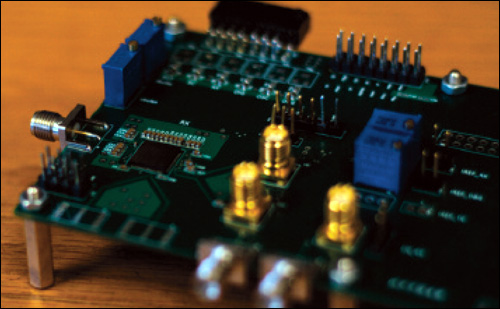Wireless sensor networks (WSNs), which use radio waves to communicate with each other and transmit data, are being employed for a variety of applications, such as monitoring animal habitats, the condition of engines on ships, and lighting and air conditioning in buildings. Recently, researchers at the Satellite Research Centre (SaRC), at Singapore’s Nanyang Technological University, took WSNs to new heights. On June 30th, they launched two sensor-equipped satellites into orbit. The mission could pave the way for future generations of tiny satellites that identify smog levels, detect early signs of earthquakes and monitor other land-based activities.
Kay-Soon Low, director of the SaRC and an associate professor in the university’s School of Electrical & Electronic Engineering, has been working in the WSN field since 2005 and has experience using ZigBee systems for industrial and medical applications. When he became director in 2009, creating WSNs in space seemed a natural extension of his earlier work.

“My vision is to develop the SaRC into a centre of excellence in nanosatellite technology and distributed space missions for remote sensing and communication applications,” Low says. “The eventual goal is to fly several miniature satellites in formation to perform collaborative sensing.”
The SaRC team believed that using wireless technologies, such as IEEE 802.15.4 and ZigBee, could be a cost-effective and lightweight way to equip satellites with sensors. But the transceiver hardware had not been qualified for use in space. The researchers designed the launch to determine whether the communication hardware could survive the space environment and the vibrations to which the hardware would be subject during a launch.
They launched the VELOX-I, which consists of a nanosatellite weighing just 4.25 kilograms (9.4 pounds) and a piggyback picosatellite named VELOX-PIII weighing 193 grams (0.425 pounds). Both miniature satellites were equipped with a ZigBee wireless network and small sensor nodes that perform functions such as sensing and data-gathering.
The research team estimates the satellites can communicate with one another at a distance of a little more than 4 kilometers (2.5 miles) in space, due to the absence of signal attenuation caused by fading and diffraction. “Two or more satellites carrying cameras and various instruments to detect various signals from Earth can cover a range of places for observation,” Low says. “Communication among the satellites is necessary to coordinate the tasks and control the satellites in real time.”
“The VELOX-I mission was a success,” Low says. The results of the team’s work was published recently in a special issue of the journal Unmanned Systems (World Scientific).
“Besides capturing the Earth image with our in-house design camera—the primary payload of the satellite—and conducting several in-orbit navigation experiments, we have successfully tested the WSN hardware and demonstrated that it can survive the launch and space environment,” Low says. “This will pave the way for us to move forward with our work on formation flying of satellites.”

